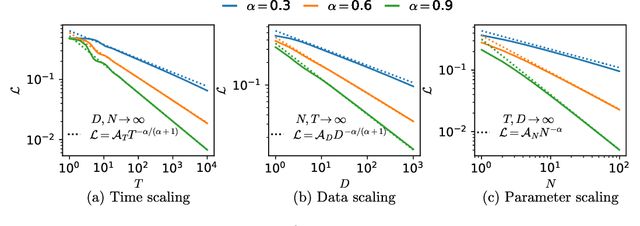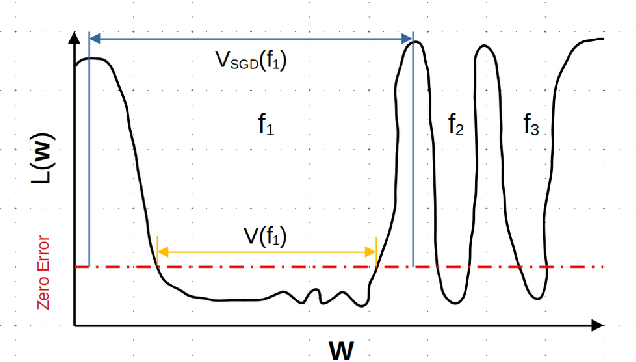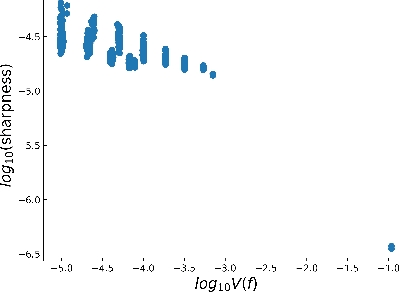Ard Louis
Characterising the Inductive Biases of Neural Networks on Boolean Data
May 29, 2025Abstract:Deep neural networks are renowned for their ability to generalise well across diverse tasks, even when heavily overparameterized. Existing works offer only partial explanations (for example, the NTK-based task-model alignment explanation neglects feature learning). Here, we provide an end-to-end, analytically tractable case study that links a network's inductive prior, its training dynamics including feature learning, and its eventual generalisation. Specifically, we exploit the one-to-one correspondence between depth-2 discrete fully connected networks and disjunctive normal form (DNF) formulas by training on Boolean functions. Under a Monte Carlo learning algorithm, our model exhibits predictable training dynamics and the emergence of interpretable features. This framework allows us to trace, in detail, how inductive bias and feature formation drive generalisation.
Visualising Feature Learning in Deep Neural Networks by Diagonalizing the Forward Feature Map
Oct 05, 2024



Abstract:Deep neural networks (DNNs) exhibit a remarkable ability to automatically learn data representations, finding appropriate features without human input. Here we present a method for analysing feature learning by decomposing DNNs into 1) a forward feature-map $\Phi$ that maps the input dataspace to the post-activations of the penultimate layer, and 2) a final linear layer that classifies the data. We diagonalize $\Phi$ with respect to the gradient descent operator and track feature learning by measuring how the eigenfunctions and eigenvalues of $\Phi$ change during training. Across many popular architectures and classification datasets, we find that DNNs converge, after just a few epochs, to a minimal feature (MF) regime dominated by a number of eigenfunctions equal to the number of classes. This behaviour resembles the neural collapse phenomenon studied at longer training times. For other DNN-data combinations, such as a fully connected network on CIFAR10, we find an extended feature (EF) regime where significantly more features are used. Optimal generalisation performance upon hyperparameter tuning typically coincides with the MF regime, but we also find examples of poor performance within the MF regime. Finally, we recast the phenomenon of neural collapse into a kernel picture which can be extended to broader tasks such as regression.
An exactly solvable model for emergence and scaling laws
Apr 26, 2024



Abstract:Deep learning models can exhibit what appears to be a sudden ability to solve a new problem as training time ($T$), training data ($D$), or model size ($N$) increases, a phenomenon known as emergence. In this paper, we present a framework where each new ability (a skill) is represented as a basis function. We solve a simple multi-linear model in this skill-basis, finding analytic expressions for the emergence of new skills, as well as for scaling laws of the loss with training time, data size, model size, and optimal compute ($C$). We compare our detailed calculations to direct simulations of a two-layer neural network trained on multitask sparse parity, where the tasks in the dataset are distributed according to a power-law. Our simple model captures, using a single fit parameter, the sigmoidal emergence of multiple new skills as training time, data size or model size increases in the neural network.
Why Flatness Correlates With Generalization For Deep Neural Networks
Mar 10, 2021



Abstract:The intuition that local flatness of the loss landscape is correlated with better generalization for deep neural networks (DNNs) has been explored for decades, spawning many different local flatness measures. Here we argue that these measures correlate with generalization because they are local approximations to a global property, the volume of the set of parameters mapping to a specific function. This global volume is equivalent to the Bayesian prior upon initialization. For functions that give zero error on a test set, it is directly proportional to the Bayesian posterior, making volume a more robust and theoretically better grounded predictor of generalization than flatness. Whilst flatness measures fail under parameter re-scaling, volume remains invariant and therefore continues to correlate well with generalization. Moreover, some variants of SGD can break the flatness-generalization correlation, while the volume-generalization correlation remains intact.
 Add to Chrome
Add to Chrome Add to Firefox
Add to Firefox Add to Edge
Add to Edge